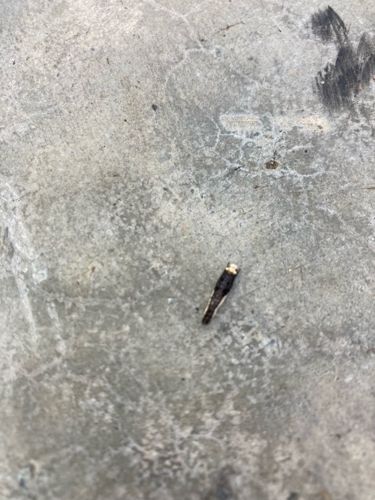Bagworm Larva (case-bearing caterpillar)
Scientific Name: Phylogenetic placement uncertain from image alone (likely Psychidae family)
Order & Family: Lepidoptera (moths and butterflies), Psychidae (bagworm moths)
Size: Larvae within cases can range from 1/4 inch to 2 inches (6 mm to 5 cm) long, depending on species and developmental stage.

Natural Habitat
Found on various plants, trees, and shrubs (e.g., junipers, arborvitae, pines, cedars, often camouflaged with plant debris)
Diet & Feeding
Herbivorous. Larvae feed on the foliage of their host plants, chewing on leaves or needles. Some species are polyphagous, feeding on a wide variety of plants, while others are more specific.
Behavior Patterns
The most distinctive behavior is the construction of a protective case from silk and environmental materials (leaves, twigs, bark fragments). The larva lives entirely within this case, enlarging it as it grows and carrying it everywhere. Only the head and thorax are extended to feed or move. Pupation occurs within the case. Adult males are winged moths, while adult females are often wingless and remain within or near their case.
Risks & Benefits
Potential risks include defoliation of host plants, especially ornamental trees and shrubs, which can lead to significant aesthetic damage or even plant death during severe infestations. They are generally not harmful to humans. Benefits are limited; they are part of the ecosystem as herbivores but can be considered pests in gardens and agricultural settings.
Identified on: 9/30/2025